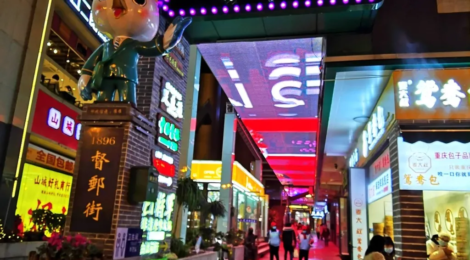
Duyou Street and Dongchuan Post Administration
Dear readers,Thank you for your continued attention to this column—— Chongqing Stories. We will continue to explore the unknown aspects of Chongqing. In this issue, we would like to talk about Duyou Street (督dū邮yóu, the meaning of it will be explained later in the article) , which used to be one of the liveliest streets in Chongqing.
Speaking of Jiefangbei Bayi Road, both local people and visitors who travel to Chongqing all know that this is a famous street full of snack booths. However, if asked about “Duyou Street”, most young people may say they’ve never heard of it. Last autumn, a light box decorated with the name “Duyou Street 1896” hung at an entrance of Bayi Street. On the left stood a statue of a humanoid pigeon in a postman’s military-green uniform, with its wings outstretched, as if inviting people to come and see what was going on in the lane. The 70-meter-long zigzag lane connecting Haochi Street and Minquan Road is the restored building of Duyou Street.
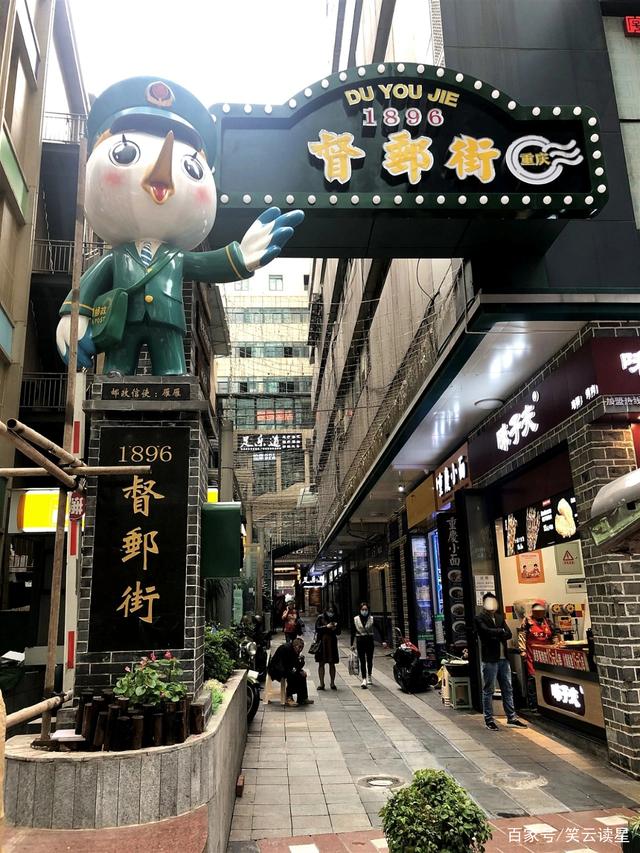
Light box on Duyou Street
“督邮”(dū yóu,supervision and posting), literally reminds people of post offices, in fact it is an official position (assistant to head of a prefecture) in ancient China whose officials will be in charge of issues including Conveying decrees, inspecting the subordinates, and examining criminal and illegal cases. During the Sui Dynasty, Emperor Wen—Yang Jian (581-600 AD) abolished the prefectures, and the “Duyou system” came to an end. During the Ming and Qing Dynasties, the so-called “Duyou Street” in Chongqing only inherited the old name, which was only the seat of government agencies, surrounded by the residences and gardens of dignitaries.
During the Anti-Japanese War, with the convenience of waterways and geographical advantages, the northern Chongqing centered on Duyou Street was not only a distribution and circulation hub for goods, but also became the political and financial center of Chongqing. However, During the Japanese bombardment lasting for six years, the city’s most prosperous Duyou Street was not spared. With perseverance and perseverance, the people of Chongqing rebuilt and expanded the ruined and burned Duyou Street, and renamed it Minquan Road and Minzu Road, making it the most bustling commercial block in the main urban area.
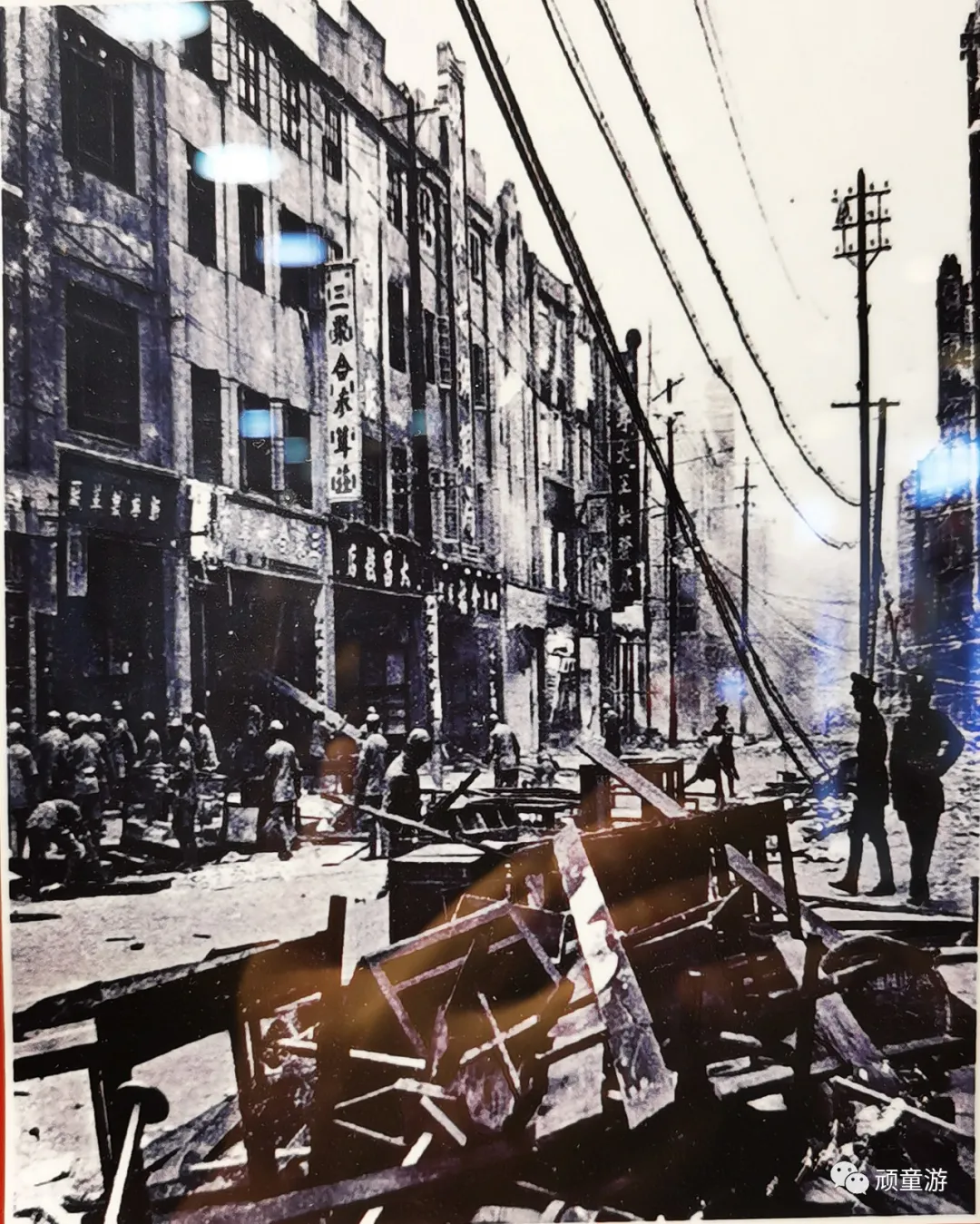
Duyou Street after the bombardment in 1939
In the alley, there is indeed a building related to postal service, which is the reconstructed memorial hall of “Dongchuan Post Administration”. The plaque also marks the establishment year of the original post office, “the 22nd year of Guangxu Emperor of the Qing Dynasty” (1896 AD).
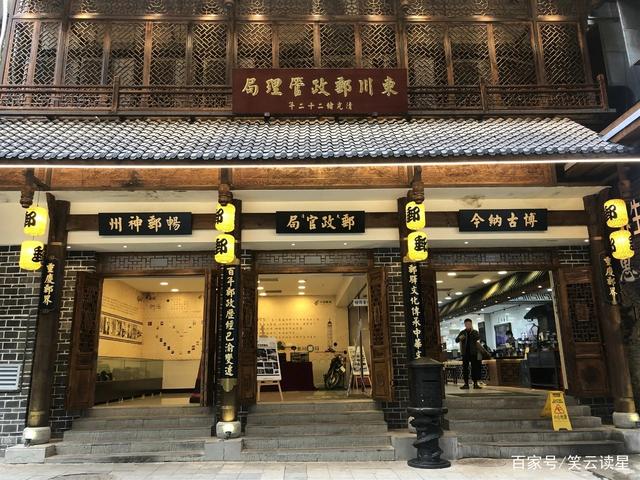
Dongchuan Post Administration
The wooden grid-structured gate is composed and atmospheric, black column and gray tile look simple and solemn, with golden plaque and yellow lantern hanging on the top, the whole building is charming and unique. On the opposite side of the gate, there are postal culture reliefs, big dragon stamp sculptures and other distinctive works of art, which attract many people to take photos. Into the memorial hall, lanterns, tiles, wood materials try their best to reproduce the old post office. An entire display wall records the history of Dongchuan Post Administration with pictures and descriptions. In addition to Chongqing, its service also covers the area of Guang ‘an, Yilong and Guangyuan in Sichuan, Zunyi in Guizhou and Zhaotong in Yunnan, making it the largest post office in Southwest China. At that time, there were more than 3,000 postal employees in this area, and the monthly mail volume was over 4 million pieces. The exhibition hall also displays a complete set of tools used by this post office, including telephone, transmitter, motorcycle, bicycle, typewriter, stamp selling machine, etc. These tools, which have experienced many vicissitudes, are silently telling the audience the glorious history of Dongchuan Post Administration and the development and changes of the post office in China.
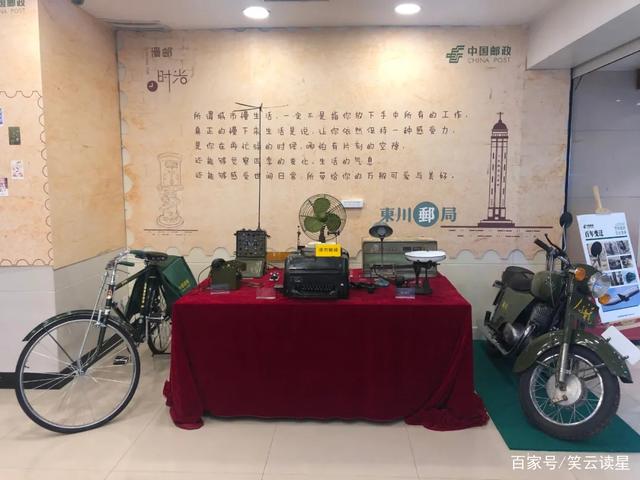
Tools used by the Post Office




